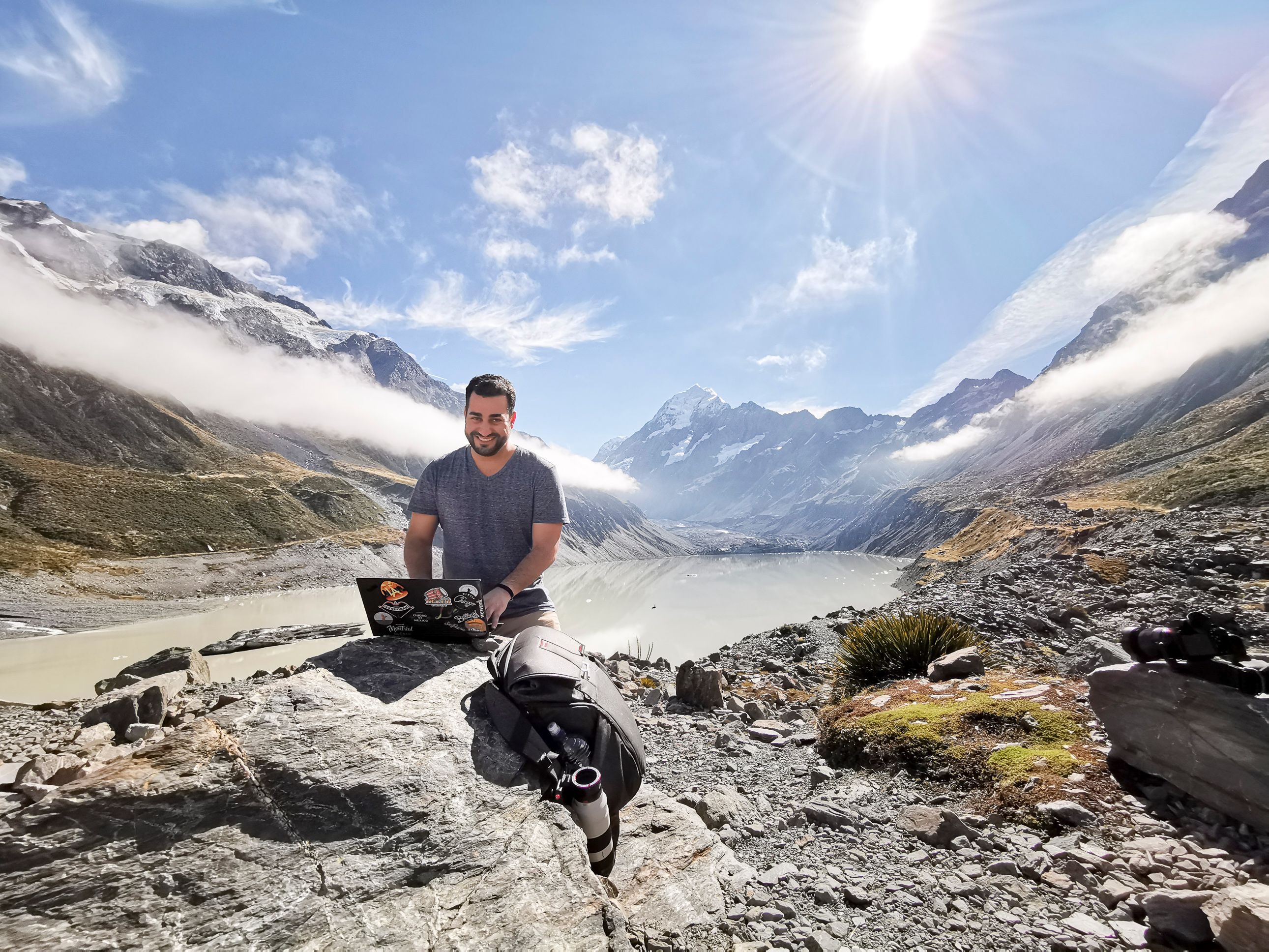Summary
- A digital nomad visa combines work and travel, offering unmatched opportunities and experiences for travel enthusiasts.
- Becoming a digital nomad requires careful planning, assessing skills, building an online presence, and securing remote work.
- Eligibility for digital nomad visas vary by country, requiring financial support, health insurance, clean criminal record, and proof of intention to leave the country after visa expiry.
There is a global shift in how people work and explore the world. This paradigm shift is embodied in the concept of "digital nomad visas." But what is a digital nomad visa, exactly? And there's the question of what travelers need to know about digital nomads, too.
A digital nomad visa is a revolutionary approach combining work and travel as well as promises unmatched opportunities and experiences. Travel enthusiasts, whether seasoned tourists or not, should understand everything that relates to this kind of visa if they aspire to embrace the digital nomad lifestyle or simply stay informed about the evolving world of work and travel.
To truly grasp its significance, one must delve into the intricacies of this innovative visa category and understand why it’s a game-changer for travel enthusiasts. Here are several important things to know about a travel visa for digital nomads.
10 What Is A Digital Nomad Visa?
A digital nomad visa is a specialized travel document designed for individuals who wish to combine work and travel seamlessly. The visa allows travel enthusiasts to legally live and work in foreign countries for extended periods, typically from a few months to two years.
Unlike traditional work visas, which are tied to a specific job or employer, digital nomad visas offer greater flexibility. The list of countries providing digital nomad visas has been growing exponentially since 2020 when the first cases of COVID-19 were reported.
9 How To Become A Digital Nomad
Becoming a digital nomad requires careful planning and preparation. While there are pros and cons of becoming a digital nomad, the lifestyle has become increasingly popular in recent years as more people seek to break free from traditional office jobs and the constraints of the 9-5.
Travel enthusiasts who aspire to embrace this lifestyle should start by assessing their skills and employment options that can be done remotely. They can also build an online presence and secure a steady stream of remote work.
Whatever the case, here are a few typical steps to securing a digital nomad visa:
- Fill out an application for a digital nomad visa for the destination country
- Make an appointment with the destination country's embassy
- Prepare documents
- Submit application
Networking within digital nomad communities and attending events and conferences dedicated to remote work can provide valuable insights and connections for those looking to embark on this lifestyle. Additionally, it's important to consider factors like time zone differences and internet connectivity when choosing destinations.
8 Eligibility For A Digital Nomad Visa
Eligibility criteria for digital nomad visas vary from country to country. Typically, tourists must demonstrate that they can financially support themselves during their stay and have health insurance coverage. Some countries may require proof of a clean criminal record and the intention to leave the country after the visa expires.
Some documents that may be required to determine eligibility include:
- Valid passport
- Digital nomad visa application form
- Proof of health insurance
- Identity photos
- Evidence of remote work and income
- Civil records, such as birth certificates, resumes, and more
Typically, the passport (used for application) must have been valid for at least 6 months before the application.
7 The Cost of A Digital Nomad Visa
The cost of a digital nomad visa varies widely depending on the country. Some nations offer these visas at a nominal fee, while others may charge a significant sum for working and living within their borders.
While some visas cost as low as $200, others may be as expensive as $3000, especially for family applications. Travel enthusiasts should budget for visa fees as well as potential expenses for health insurance and other required documentation.
Destinations like Barbuda have the highest digital nomad application fees.
6 The Difference Between A Work Visa, Travel Visa, And A Digital Nomad Visa
It's crucial for travelers to understand the distinctions between various types of visas. A work visa is typically tied to a specific job and employer, while a travel visa is for leisure or short-term visits. In contrast, a digital nomad visa offers the flexibility to legally work remotely while exploring a foreign country. This visa category is designed to accommodate the unique lifestyle of those who wish to work while traveling.
When choosing the right visa, consider the following factors:
- The intended length of stay
- Work arrangements
- Specific requirements of the country one plans to visit
5 The Types Of Work One Can Do With A Digital Nomad Visa
Digital nomad visas are versatile, which allows tourists to engage in a wide range of remote work and entrepreneurial activities. These visas not only encourage personal growth and cultural enrichment but also foster a sense of global interconnectedness.
Common professions of digital nomads include:
- Software development
- Online marketing
- E-commerce and dropshipping
- Content creation
- Virtual assistance
- Graphic design
- Remote sales and Business development
- Online trading and investment
- Online research and data analysis
This flexibility empowers travel enthusiasts to pursue their passions and maintain their careers while exploring new horizons. With the world as a tourist's office, the possibilities are endless, and the adventure never stops.
4 The Filing Of Taxes For Digital Nomads
Digital nomads may face unique tax obligations, as their income may come from various sources and be subject to different tax jurisdictions. As such, understanding tax laws and compliance requirements is crucial.
For instance, all US citizens who earn more than the minimum amount required to file tax returns need to file their taxes even if they work remotely abroad.
Some countries have tax treaties that can help tourists avoid double taxation. It's essential to consult with tax professionals who specialize in international tax matters.
3 Countries That Offer Digital Nomad Visas
Many countries around the world now offer digital nomad visas to attract remote workers and travelers. Popular destinations that offer digital nomad visas include:
- Estonia
- Portugal
- Mexico
- Thailand
- Barbados
- Antigua and Barbuda
- Cayman Islands
- Costa Rica
Each country has its own visa requirements, benefits, and restrictions. Travelers should research and choose a destination that aligns with their preferences and work arrangements.
Take into account factors such as cost of living, quality of life, cultural experiences, and visa duration when selecting a digital nomad destination. Stay informed about any updates or changes to visa programs in the chosen country.
2 Can Digital Nomads Travel With Family Members?
Some digital nomad visas may allow family members to accompany the primary visa holder. However, this varies from country to country. Travelers who wish to bring their family along should research the specific visa regulations and requirements for dependents. The country of choice's embassy is a great place to check.
If explorers plan to travel with family members, they need to ensure that the chosen destination offers suitable amenities and educational options for children. Also, be prepared to meet any additional visa and documentation requirements for any dependents.
Whether with a family or not, some of the best countries for digital nomads include Colombia, Estonia, Iceland, and Mexico. Columbia is an excellent destination for travel enthusiasts looking for countries where digital nomads can live for less than $ 1,000 per month.
1 The Future Of Digital Nomad Visa
The future of digital nomad visas looks promising as more countries recognize the economic and cultural benefits of attracting remote workers and travel enthusiasts. This trend is likely to continue expanding and offer more opportunities for individuals seeking a flexible and adventurous work-travel lifestyle.
One significant aspect of the future of digital nomad visas is the potential for greater standardization and cooperation among countries. Countries may establish international agreements or networks to streamline the application process and create more uniform regulations. This could make it easier for digital nomads to not only navigate the legal requirements but also learn how to make ends meet and make it work being a digital nomad.











